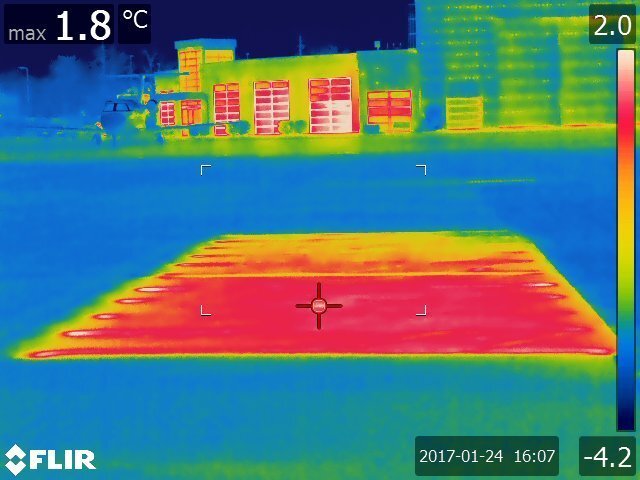It's not just airplane wings that need to stay ice-free in the winter – it's also pretty darn important that the runways not be icy, either. With that in mind, an Iowa State University team led by Prof. Halil Ceylan has developed a new type of electrically-conductive concrete that melts snow and ice. The material is currently being tested at Des Moines International Airport.
Installed on the apron of the airport's general aviation area, the testbed takes the form of two side-by-side slabs of concrete, each measuring 15 x 13.5 feet (4.6 x 4.1 m).
Each slab is 7.5 inches thick (19 cm), and consists of two layers. The bottom 4-inch (10-cm) layer is made up of regular concrete, while the top layer consists of 1 percent carbon fiber combined with a special mix of cement, sand and rocks. Sandwiched between those layers are six electrodes (per slab) that are hard-wired to a power supply in a nearby hangar.
When the electrodes are remotely powered up via an app, they send an electrical current through the top layer. The carbon fiber content makes the concrete electrically conductive, yet there's still enough resistance that heat is generated. That heat makes the surface of concrete hot enough to melt away accumulated ice and snow, yet still safe to touch.

A hydrophobic coating is going to be added to one of the test slabs soon, helping the material to repel moisture.
Using 333 watts per square meter for seven hours, the concrete has a claimed operating cost of about 19 cents per square meter. Seven hours, says Ceylan, is "way more than enough to melt an inch of ice or snow." Although it would be more expensive to install than regular concrete, it would reportedly reduce the need for plows, de-icing chemicals, and wastewater treatment of chemical runoff.
In fact, it may be best suited to congested areas such as aprons (as opposed to the main runways), where there's too much traffic for plows to operate. It could also find use in the sidewalks outside of airports.
Ceylan's research is part of a larger program being run by the Federal Aviation Administration, which has also been testing a different type of ice-melting concrete developed at the University of Nebraska-Lincoln. That material conducts electricity via a mixture of steel shavings and carbon particles.
Source: Iowa State University





